The fourth highest waterfall in Canada, Helmcken Falls in British Columbia looks amazing in every season.
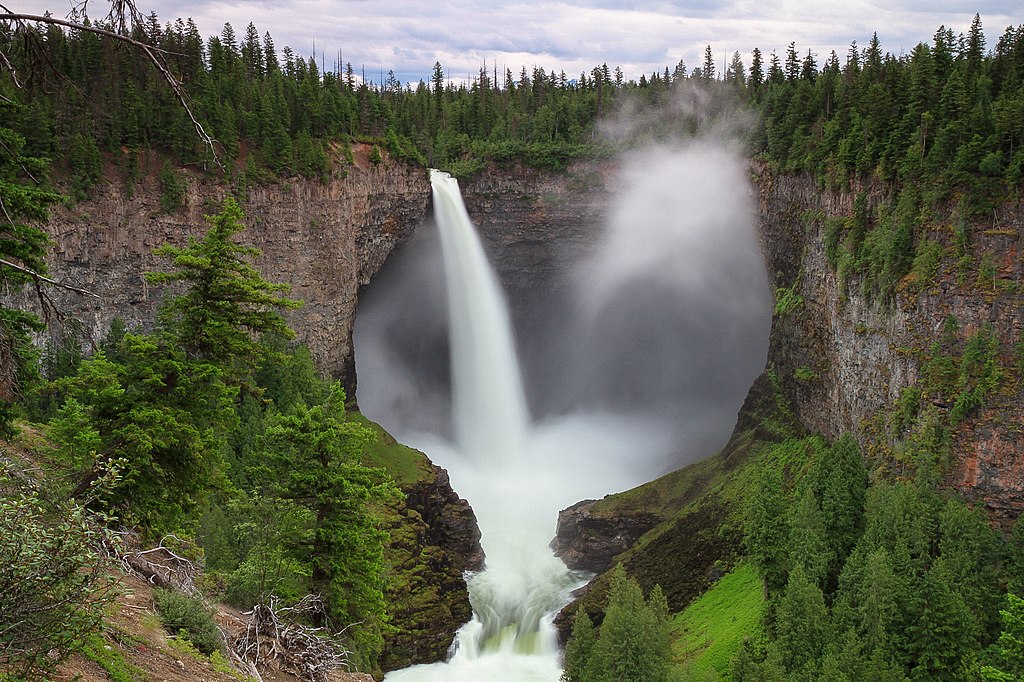
Image credit: William Redmond
Helmcken Falls is a 463 foot (141 m) waterfall on the Murtle River in Wells Gray Provincial Park, British Columbia, Canada. It is the most famous of the park’s seven waterfalls and was actually one of the reasons why the protected area was created.
Although most people visit the place in the warmer months, especially during the summer, Helmcken Falls is arguably even more breathtaking in the winter. Just look at this. A real snowcano!
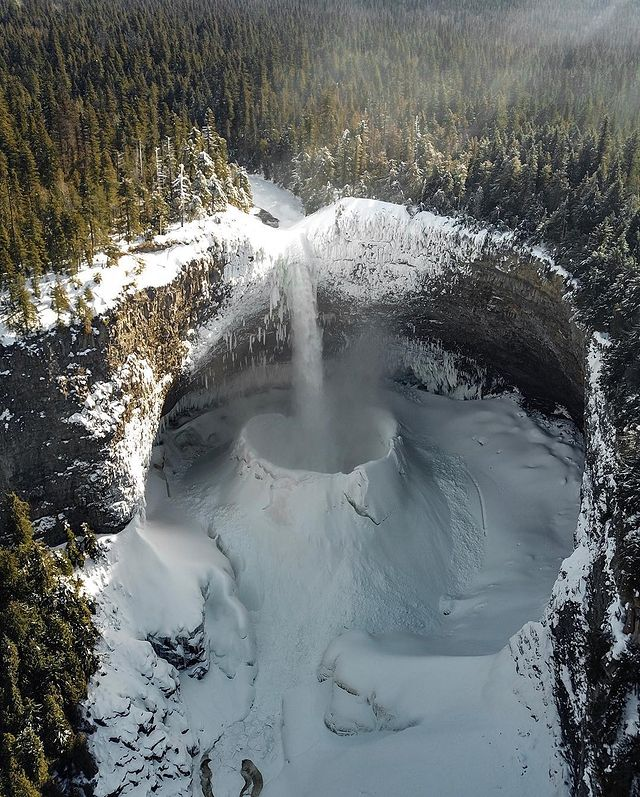
During colder winters, the ice cone grows to 200 foot (60 m) or taller. The best time to see the cone is between late January and late February.
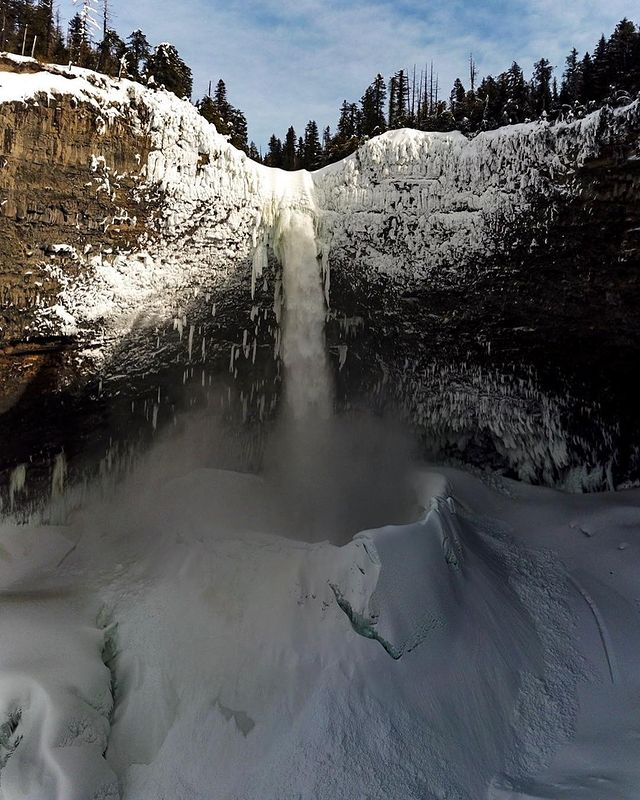
It’s truly an amazing sight, but if you decide to visit during this time of the year, be sure to know and obey the park’s safety precautions. The heavy snow and ice can make the roads quite slippery, so make sure to use tire chains.
The cone collapses inward sometime during March, but some remnants are even visible in June.

Image credit: Murray Foubister
A huge lava deposit filled the wide Clearwater River valley over 200,000 years ago, with layers of fresh lava eventually forming the volcanic Murtle Plateau, from where Helmcken Falls drop over.
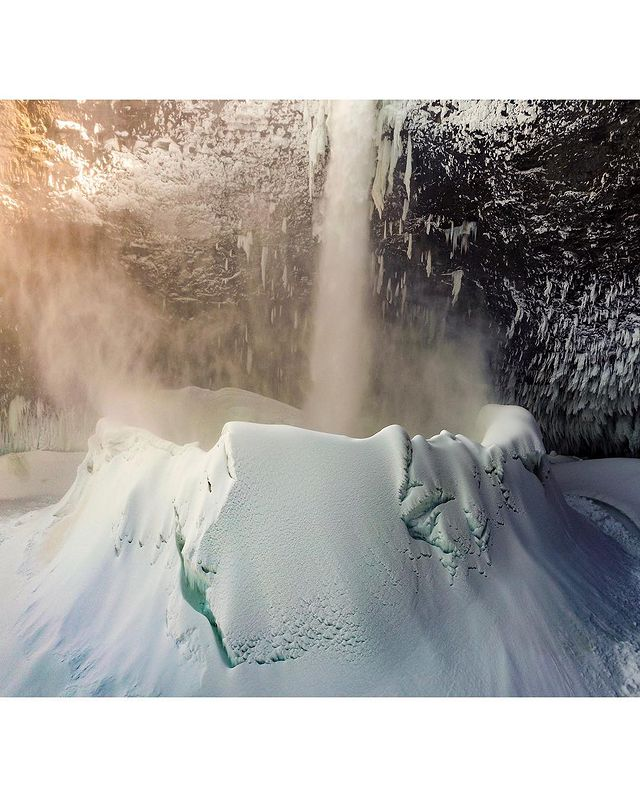
Then, roughly 10,000 years ago, during the last ice age, enormous floods eroded the lava, creating Helmcken Canyon below the falls.

Image credit: Roland Neave
Just a few kilometers upstream, the Murtle River drops over 300 foot (90 m) wide Dawson Falls, then narrows to about 75 foot (23 m) wide and surges over the lip of Helmcken Canyon, down to the largest river-sculpted amphitheaters in North America.
Behind the falls, the bowl recedes over 150 feet (45 m) into the cliff and stretches over 500 feet (152 m) wide. A 50 ft (15 m) lower tier is located a little bit further downstream, boosting the total height of the waterfall to over 500 feet or 150 meters.
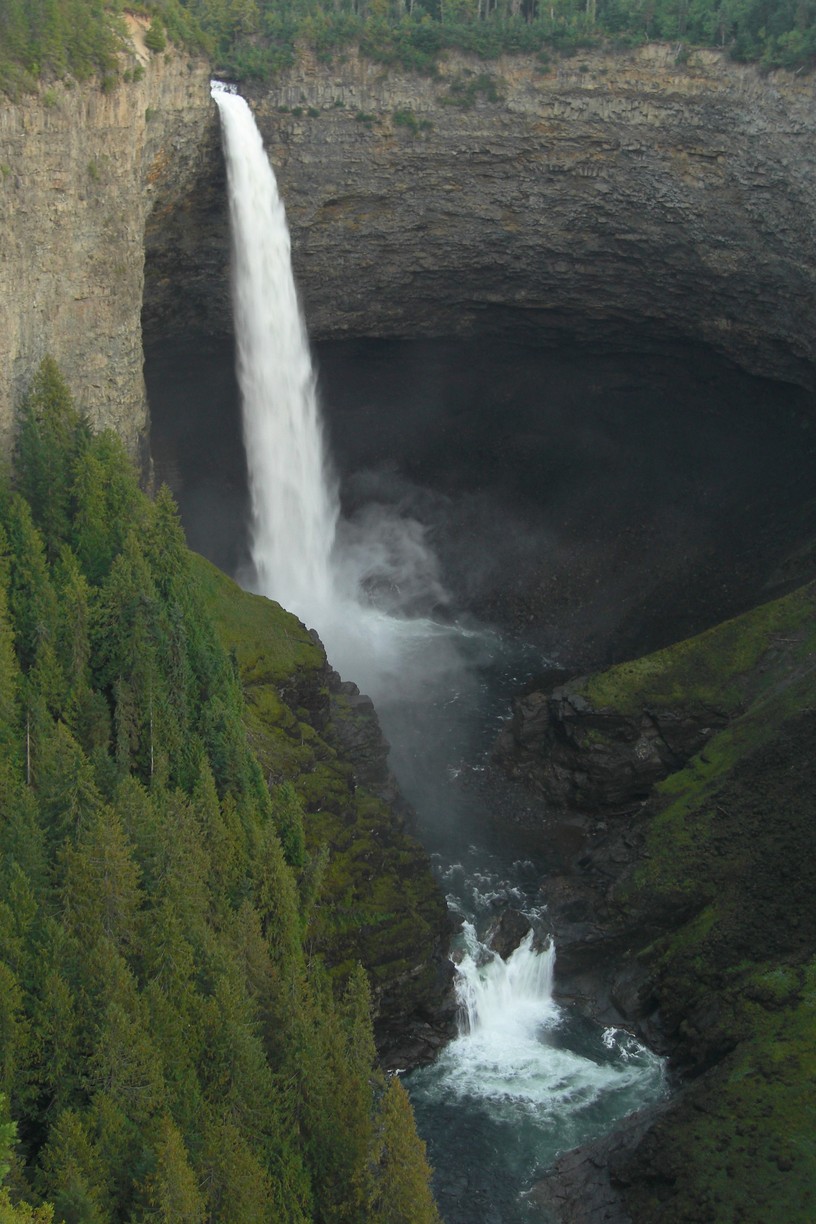
Image credit: Jason Hollinger
Pictures cannot cannot do this waterfall justice, as they fail to convey the true power and sheer volume of water hurtling down the cliff. The huge amount of spray ejected into the air is responsible for the build-up of the enormous winter cone, and in the summer, it can reach the rim of the canyon if the conditions are right.
In the 1950s and 1960s there were plans to harness this power by building dams along the Clearwater and Murtle Rivers, but luckily none of them came to fruition before the 1.3 million acre Wells Gray Provincial Park area would be fully protected from development in 1973. Had the dams been built, Hemlcken Falls would have been largely submerged behind a 450 foot (137 m) dam.
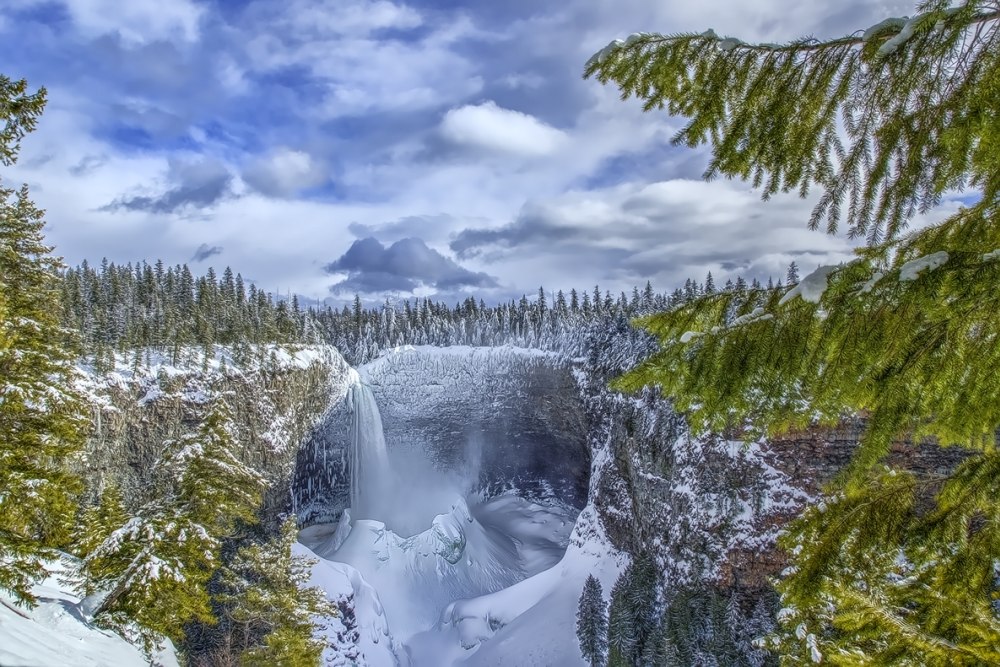
Image credit: Alan D. Wilson
Thankfully, that didn’t happen, so we can still witness this monument to the power and beauty of nature.

